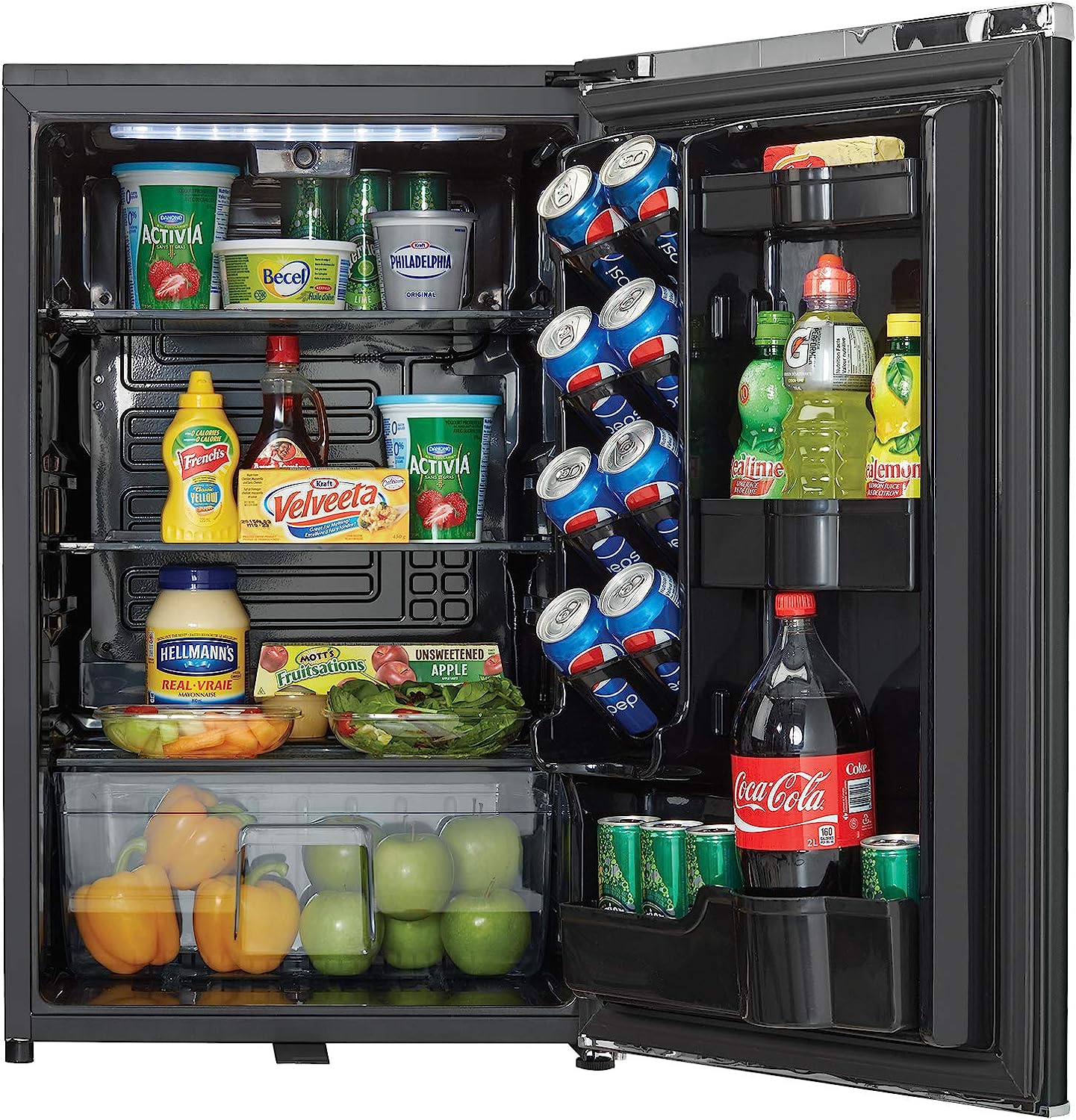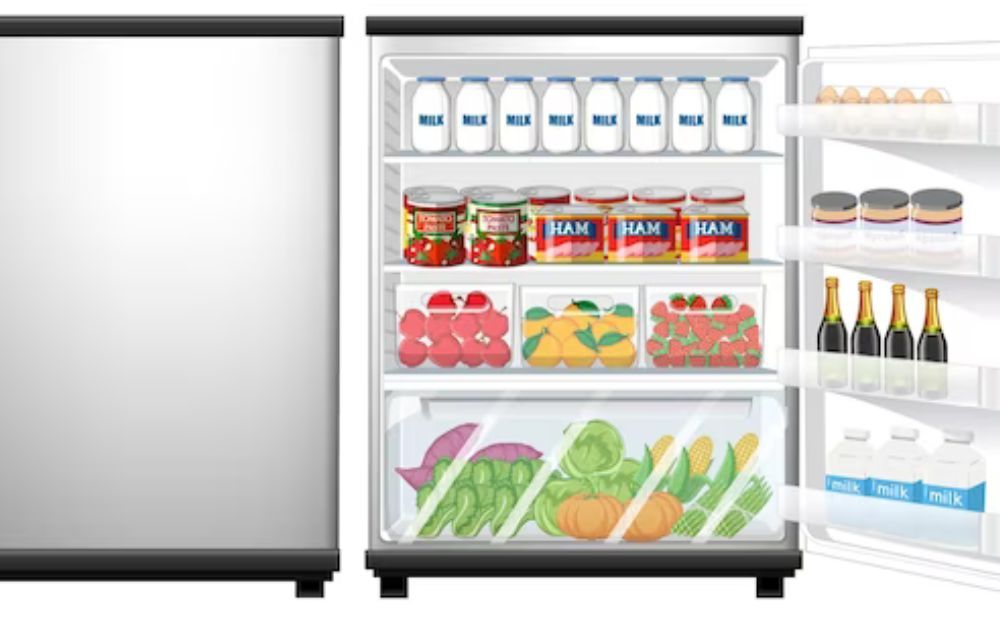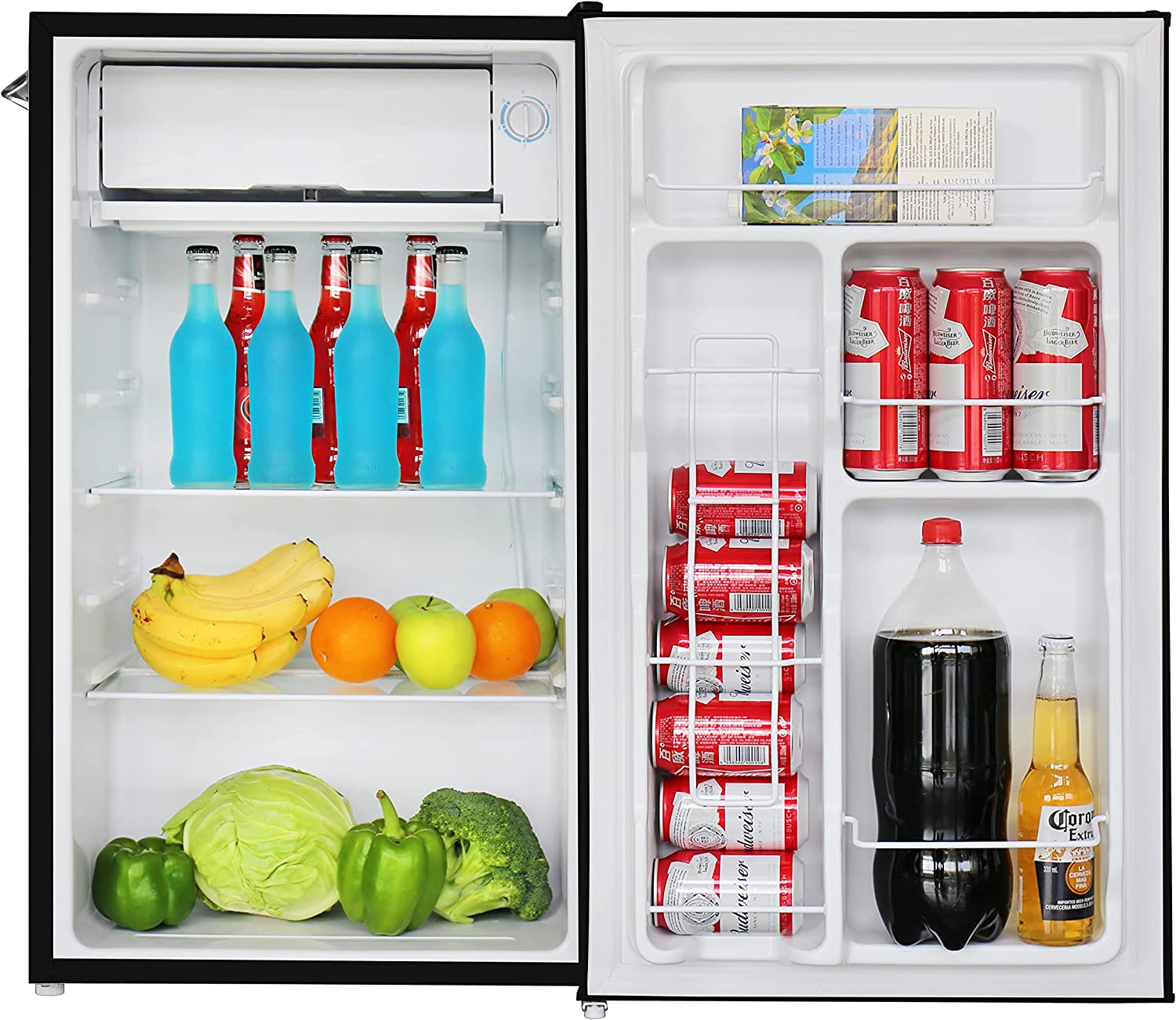A mini fridge is a convenient appliance that serves a variety of purposes, from storing beverages in your home bar to providing additional cold storage in your office.
However, like any appliance, it can run into problems. One of the most common issues is when the mini fridge won't get cold.
This can be frustrating, especially when you rely on it to keep your food and drinks at the right temperature.
- Adjusting the thermostat and maintaining a full fridge can help make a mini fridge colder.
- Regular maintenance, including cleaning, checking the door seal, and defrosting, is crucial for optimal fridge performance.
- The location of the mini fridge and the frequency of door openings can significantly impact its cooling efficiency.
- If a mini fridge isn't getting cold despite these measures, professional help may be required.
- The ideal temperature for a mini fridge is between 35°F and 40°F (1.7°C to 4.4°C).
Understanding the Problem
There could be several reasons why your mini fridge is not getting cold. It could be due to a power issue, a problem with the thermostat, or even a blockage in the vents.
Understanding the potential causes is the first step towards fixing the problem. It's also important to note that some issues might require professional help, especially if they involve electrical components or refrigerant.
1. Checking the Power Cord
One of the first things you should check when your mini fridge isn't cooling is the power cord. It might seem basic, but sometimes the problem could be as simple as the fridge not getting power.
Check to see if the power cord is plugged in properly and if the cord itself is not damaged. If the cord is damaged, it's best to replace it.
If the power cord is fine, you might want to check the outlet by plugging in another device to see if it's working.
You can also use a multimeter to test the outlet, as explained in this guide on testing electrical outlets.
In the next part of this article, we will discuss how to check your circuit breaker and test the outlet.

Check The Electrical Connections to Keep Your Mini Fridge Cold
2. Checking Your Circuit Breaker
The circuit breaker plays a crucial role in the functioning of your mini fridge. It's designed to protect your home from electrical overloads or short circuits.
If your mini fridge isn't getting cold, it's possible that the circuit breaker has tripped, cutting off power to the outlet your fridge is plugged into.
To check this, locate your home's electrical panel and find the switch that corresponds to your mini fridge or the outlet it's plugged into.
If the switch is in the "off" position or in the middle, flip it back to the "on" position.
If you're unsure about this process, you can refer to this guide on understanding circuit breakers.
3. Testing the Outlet
After checking the power cord and the circuit breaker, the next step is to test the outlet.
An easy way to do this is by plugging another device, like a lamp or a phone charger, into the outlet.
If the device works, then the outlet is fine. If the device doesn't work, then the problem might be with the outlet itself.
In this case, you might need to contact a professional electrician to fix the outlet.
In the next part of this article, we will discuss how to check the thermostat and test the door seal.
4. Checking the Thermostat
The thermostat in your mini fridge regulates the temperature inside the fridge. If it's not set correctly, your fridge might not get cold.
To check the thermostat, locate it inside your mini fridge (usually it's a dial or a digital panel) and see what temperature it's set at.
The ideal temperature for a fridge is between 35°F and 40°F (1.6°C to 4.4°C).
If the thermostat is set within this range and the fridge is still not cold, the thermostat might be broken and need replacing.

Keep The Proper Temperature To Keep Your Mini Fridge Cold
5. Testing the Door Seal
The door seal, also known as the gasket, is crucial for keeping the cold air inside the fridge.
If the seal is damaged or worn out, cold air can escape, causing the fridge to not get cold.
To test the door seal, close the fridge door on a thin piece of paper or a dollar bill.
If you can pull the paper or bill out easily, the seal might not be tight enough. Check the entire perimeter of the door this way.
If the seal is faulty, it will need to be replaced.
In the next part of this article, we will discuss how to check the condenser coils and interior vents for blockages.
6. Checking the Condenser Coils
The condenser coils in your mini fridge play a crucial role in the cooling process. They dissipate heat as the refrigerant passes through them.
If the coils are covered in dust or dirt, they won't be able to dissipate heat effectively, which could result in the fridge not getting cold.
To check the condenser coils, you'll usually need to move the fridge away from the wall as they are typically located at the back.
If the coils are dirty, they can be cleaned with a vacuum or a coil cleaning brush.
7. Checking Interior Vents for Blockages
The interior vents in your mini fridge allow cold air to circulate throughout the fridge.
If these vents are blocked by food or debris, it can prevent the fridge from getting cold.
To check for blockages, look for the vents inside your fridge (they are usually located on the back wall or under the freezer compartment in a mini fridge).
Make sure there's nothing blocking these vents and that air can flow freely.
In the next part of this article, we will answer some frequently asked questions about mini fridges not getting cold.
8. Checking the Freezer
In some mini fridges, there is a small freezer compartment at the top. If this freezer compartment is overfilled or iced over, it can affect the overall cooling of the fridge.
The freezer compartment should not be packed too tightly as it can restrict the circulation of cold air.
If there is a buildup of ice, it might be time to defrost your mini fridge.
To do this, unplug the fridge, remove all items, and leave the door open to allow the ice to melt. Remember to place a towel or a tray underneath to catch the water.
By ensuring the freezer compartment is not overfilled and is free of ice, you can help improve the cooling efficiency of your mini fridge.
9. Checking the Refrigerant
The refrigerant in your mini fridge is a crucial component that absorbs and removes heat from the fridge, keeping your items cold.
If your mini fridge isn't getting cold, it's possible that there's an issue with the refrigerant. This could be due to a leak or because the refrigerant level is low.
However, checking the refrigerant is not a DIY job. It involves handling potentially harmful substances and requires specialized knowledge and tools.
If you suspect a problem with the refrigerant, it's best to call a professional. They can safely check the refrigerant level and fix any leaks or refill the refrigerant if necessary.
Remember, handling refrigerant improperly can be dangerous and can potentially damage your mini fridge further.
Always seek professional help when dealing with refrigerant issues.

Check Door Seals and The Freezer Compartment To Keep Your Mini Fridge Cold
In the end, a properly functioning mini fridge is more than just a convenience—it's an essential tool for keeping your food and drinks at the right temperature.
By taking the time to understand and address the issues that can prevent your fridge from getting cold, you can ensure that your mini fridge continues to serve you well for many years to come.
Is it time to replace that old bedroom mini fridge? If so, check out our article on Bedroom Mini Fridges and find one that works for you!

Frequently Asked Questions
Here are some common questions people often ask when their mini fridge isn't getting cold:
Why is my mini fridge not getting cold?
There could be several reasons why your mini fridge isn't getting cold. It could be due to a power issue, a problem with the thermostat, a faulty door seal, dirty condenser coils, or blockages in the interior vents.
How do I fix a mini fridge that isn't getting cold?
Start by checking the power cord and the outlet. Then, check the thermostat and the door seal. Also, inspect the condenser coils and the interior vents. If you've checked all these and the fridge is still not getting cold, it might be time to call a professional.
Can a mini fridge be repaired?
Yes, a mini fridge can often be repaired, depending on the issue. Some problems, like a faulty power cord or a broken thermostat, can be fixed relatively easily. However, other issues, like a problem with the refrigerant, might require professional help.
How much does it cost to fix a mini fridge?
The cost to fix a mini fridge can vary widely, depending on the issue and whether you need professional help. Simple fixes, like cleaning the condenser coils or replacing the door seal, can often be done at home for little to no cost. However, more complex repairs, like fixing a refrigerant leak, can be more expensive.
Refrigerator Not Cooling - How to Fix - What to Check [2020] - Dave Wirth










